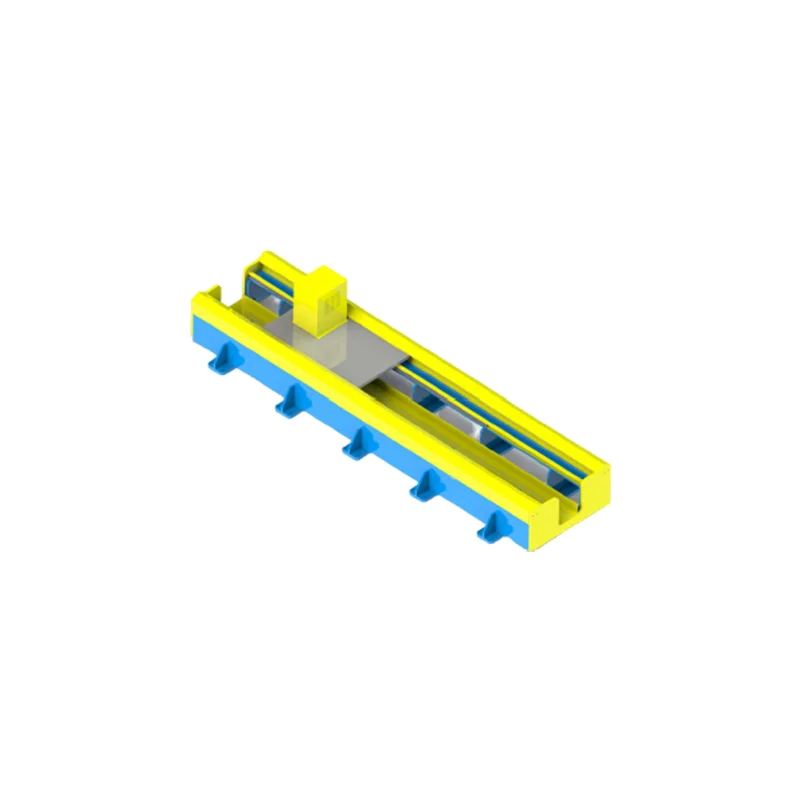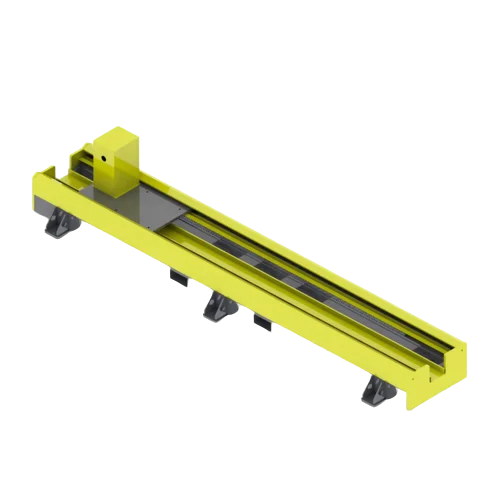Introduction
The introduction of automation and robotics has significantly transformed a time when optimization and accuracy are considered critical success factors for manufacturing processes. Robot tracks and welding robots stand out among the numerous technological advancements for their significant contributions to productivity optimization. These technologies are not merely enhancing the functionalities of sectors; rather, they are fundamentally transforming the manufacturing process, guaranteeing elevated quality benchmarks, and expanding the limits of manufacturing potential.
This article explores the complexities associated with robot tracks and welding robots, with a specific emphasis on two state-of-the-art products: the EVS Robot track and the QJR6-1400H Welding robot. Through an examination of their characteristics, practical implementations, and inherent advantages, our objective is to furnish an all-encompassing comprehension of the ways in which these technologies can be harnessed to augment manufacturing procedures.
Understanding Robot tracks
What Are Robot Tracks?
At its foundation, robot tracks technology offers a flexible and effective way to increase the operational scope of robots in a manufacturing environment. These tracks facilitate the movement of robotics along pre-established trajectories with remarkable accuracy, thus enhancing the efficiency of a wide range of operations, including welding, cutting, handling, and painting.
Spotlight on EVS Robot Track
The EVS Robot track exemplifies the pinnacle of robot tracks technology. Designed to cater to a broad spectrum of applications, including welding, cutting, handling, machining, painting, and gluing, this track system is built for versatility. Its integration of renowned reducer and gear components ensures both the accuracy and stability of the walking rail, which are crucial for the delicate operations it performs.
The track stands out not just for its technical prowess but also for its adaptability. Understanding that different manufacturing processes have unique requirements, the EVS Robot track can be customized in terms of rated load and length. Whether it’s supporting a payload of 300-3000kg or achieving repeat positioning accuracy of ±0.10mm (under 1000kg payload) / ±0.15mm (1000-3000kg payload), this track system is engineered to meet specific manufacturing needs with unparalleled precision.
Technical Specifications
Walking Method: Single Axis Ground Mounting Robot Servo Walking Rail (light duty)
Standard Length: 4000mm, with extensions available in 1000mm, 2000mm, and 4000mm segments (customizable)
Mounting Method: Ground Mounting
Protection: Semi-enclosed Sheet Metal
Lubricating System: Self-lubrication, ensuring smooth operation and longevity of the system
Drag Chain Mounting Position: Center, optimizing the management of cables and hoses during operation
This level of detail in design and customization options underscores the role of robot tracks in enhancing the efficiency and productivity of manufacturing processes. By providing a stable and precise platform for robotic operations, the EVS Robot Track sets a new standard in industrial automation.
The Role of Welding Robots in Modern Manufacturing
Revolutionizing Welding with Robotics
Welding robots have become indispensable in the manufacturing landscape, offering unparalleled precision, efficiency, and flexibility. These advanced machines are designed to automate the welding process, executing tasks with a level of accuracy and consistency that far surpasses traditional manual methods.
Introducing the QJR6-1400H Welding Robot
A prime example of this technology is the 6KG Payload 1.4M Reaching Distance 6 Axis Welding Robot, known as the QJR6-1400H. This machine is not just another welding robot; it represents the zenith of robotics engineering, boasting multiterm exclusive patents and performance that eclipses similar products. Its joint gear grip adjustment allows for fine control and rapid dynamic response, while the hollow joint support structure enhances rigidity and flexibility. Additionally, the robot’s noise reduction structure ensures its operation is remarkably quiet.
Key Features
Payload: 6kg, making it suitable for a wide range of welding tasks.
Repeat Positioning Accuracy: ±0.08mm, ensuring high-quality welds.
Max Armspan: 1456mm, providing extensive reach for various applications.
Motion Range: Offers extensive freedom of movement across all axes, enabling complex welding tasks to be performed with ease.
This welding robot is adept at handling a variety of materials, including carbon steel, stainless steel, aluminum, and copper, making it a versatile tool in the manufacturing arsenal.
Case Studies
Enhancing Fitness Equipment Manufacturing
One notable application of these technologies is observed in a project focused on welding fitness equipment. The combination of QJRH4-1 robots and single-axis positioners has revolutionized the production process. By coordinating the movement of the robot and positioner, not only has space been conserved, but efficiency has also skyrocketed. This synergy has resulted in smoother, more stable, and tighter welding seams. The simplicity of the robot’s operation facilitates automatic welding, significantly boosting both efficiency and quality. The robot’s specifications, including a 4kg load capacity and a repetitive positioning accuracy of ±0.03mm, alongside a 6-axis system and an arm span of 1410.5mm, underline its capability to execute intricate welding tasks with precision.
Commitment to Quality and Innovation
The dedication to quality is further exemplified by QJAR robots, which have passed rigorous CE tests and ISO 9001: 2015 certification. An investment of 10 million USD in high-standard testing machines underscores a commitment to excellence. This investment in quality assurance tools, such as laser trackers, flaw detectors, and three-coordinate measuring machines, ensures that each robot meets the highest standards of performance and reliability.
Integrating Robot Tracks and Welding Robots into Manufacturing Operations
While initially intimidating, the integration of robot tracks and welding robots into manufacturing operations undoubtedly yields improvements in productivity and quality. To ensure successful integration of these technologies, manufacturers should undertake a thorough assessment of their specific needs, considering factors such as the composition of materials utilized, the complexity of procedures, and the desired level of precision.
Choosing the Right Technology
It is essential, when choosing robot tracks and welding robots, to align the technology with the intended application. The versatility of the EVS Robot track renders it a solid foundation for a wide range of robotic operations, whereas the precision and adaptability of the QJR6-1400H render it optimal for intricate welding endeavors.
Overcoming Implementation Challenges
There may be obstacles associated with the implementation of these technologies, such as the initial investment and the requirement for staff training. Nevertheless, the enduring advantages, including heightened productivity, diminished waste, and improved product quality, considerably surpass these challenges. By partnering with seasoned providers who provide comprehensive support, from initial configuration to ongoing maintenance and training, manufacturers can surmount these obstacles.
Conclusion
Incorporating robot tracks and welding robots into manufacturing operations signifies an enormous advance in industrial automation. Through the improvement of accuracy, efficiency, and adaptability, these technologies are establishing novel benchmarks for output and excellence. Anticipating forthcoming developments, the ongoing progression of automation in the manufacturing sector holds the potential to propel innovation and enhance competitiveness on an international scale.
In order to maintain a competitive edge in their respective industries, manufacturers must not merely consider the feasibility of investigating the capabilities of advanced robotics technology; rather, they must do so without reservation. By implementing robot tracks and welding robots, organizations can attain unprecedented levels of efficiency and excellence, thereby establishing a competitive advantage in a dynamic marketplace. We invite you to contact us for a consultation in order to discover further how these technologies can be customized to suit your manufacturing requirements. Embrace the future of manufacturing immediately and allow robotics to improve your production processes.



